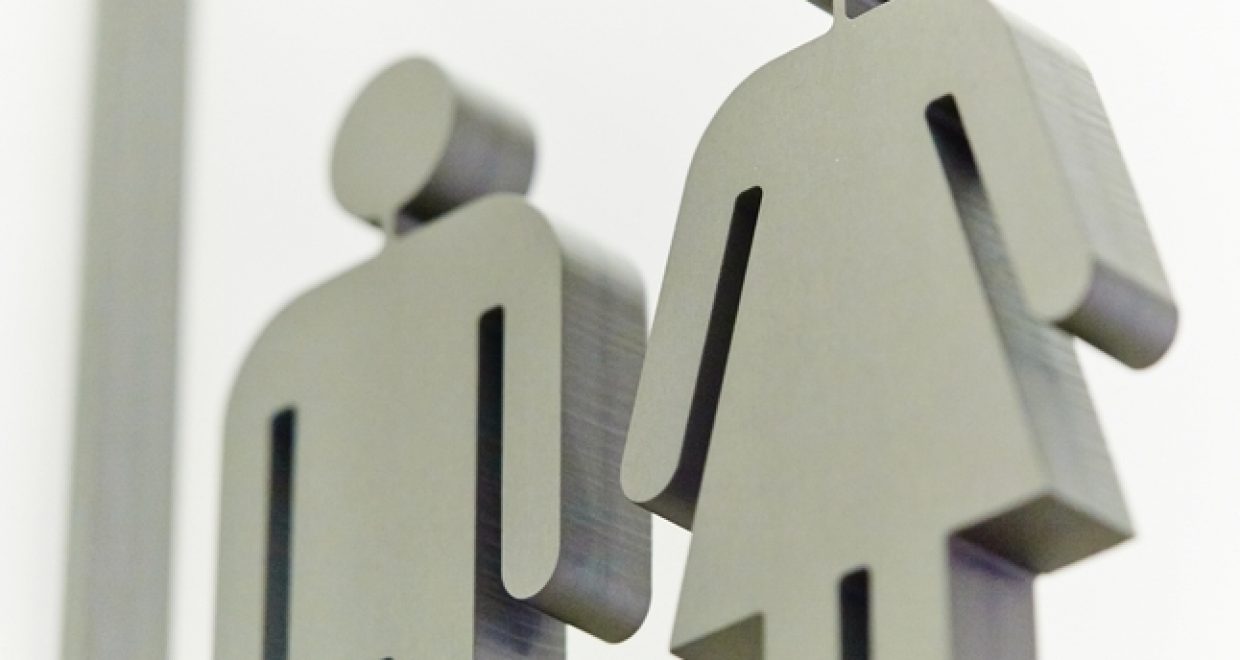Gender-Submission Gap and Women’s Underrepresentation in Political Science Journals
Women are running for U.S. public office in record numbers, offering hopes of seriously tackling the gender gap in political representation. So too, leaders in the political science community have brought attention to the underrepresentation of women in the very profession dedicated to studying representation. Exciting political science initiatives span a range of activities that aim to diagnose and redress persistent gender-gaps in the field, including women’s underrepresentation in academic print. Following Dawn Teele and Kathy Thelen’s incisive article, Gender in the Journals, which looked at the gender publication gap in political science journals, editors from several top journals were motivated to analyze their internal data regarding potential gender bias in the editorial process. The resulting Special Issue of P.S. includes articles by five leading journals, including American Political Science Review (König & Ropers), Comparative Political Studies (Samuels), International Studies Quarterly (Nedal & Nexon), Political Behavior (Peterson) and World Politics (Tudor & Yashar).
What do We Learn about Bias and Gender Gaps?
With a deep dive into gender, co-authorship, and career-cycle patterns for 10 years of submission data, we identify a number of noteworthy patterns in the World Politics data – including unbiased acceptance rates and a notable submission gap. Here we flag some of our core findings, with references to Tables and Figures included in the original article.
• We find no evidence of systematic, quantitatively identifiable, bias against women in the review process. Unbiased acceptance rates were also reported in the other four journals included in the special issue, each based on an evaluation of internal journal submissions and review data (for World Politics results, see Tables 3 and 6 in original article). As noted below, we should continue to be vigilant to evaluate if bias is occurring in other ways not captured by this statistical analysis.
• There is a publication gap, however, as noted by Teele and Thelen. The majority of articles published in World Politics are authored by one or more men, with articles by single-sex teams of one or more women representing just over 20% of publications. See Table 1 (final column).

• There is notably also a submissions gap. Men, either alone or in teams, submit the clear majority of manuscripts (see Table 1). This pattern has remained fairly consistent for the last decade (see Figure 1). Analyzing the annual data by team type, between 2008 and 2016 single-sex teams by one or more men constituted between 60.6 and 69.5% of submissions, whereas single-sex teams of one or more women constituted between 19.3 and 24.9% of submissions. We suspect that this submissions gap is one of the intermediate drivers of the gendered discrepancy in publication rates; it thus deserves special attention when addressing next steps for redressing the publication gap.

• Early Career Stage particularly affects gender-submission gap. The gender-submission gap appears across career stages, but representation in submissions relative to representation in the field is the most skewed for graduate students and junior scholars. At each of the career stages, graduate students (no PhD), junior faculty (1 to 7 years with PhD), and senior faculty (more than 7 years with PhD) women respectively submit 23.9, 32.2, and 22.5% of solo-authored manuscripts. In 2014, women represented 40, 39, and 23-33% of political scientist at each career stage (latter range based on difference in share of associate and full faculty). (See Table 7 and Figure 3).


• Coauthorship is also gendered. Female graduate students are underrepresented in cross-rank coauthorships. Senior women tend to favor graduate students who are women in coauthorship, relative to their proportion in the field, and men tend to favor graduate students who are men. However, since the vast majority of senior scholars are men (nearly 80% of full professors), this pattern reveals a huge coauthorship disadvantage for women (see Table 8).

Where does the Profession Go Next? Revisiting Pipeline and Mentorship Issues
Overall our report highlights how important pipeline and mentorship issues are to the profession at large. To counteract the disproportionately low number of publications by women, we need not only to shine a spotlight on the editorial review process but also redress why women are submitting at lower rates. Our work suggests that the discipline would benefit from future research and proactive initiatives aimed at understanding and redressing low submissions among women. Future diagnostic work should investigate the relationship between women’s submission rates (over the course of their career) and their broader structural conditions at work and home—including a lack of gender parity among faculty, work environment, and disproportionate family responsibilities.
In terms of potential interventions, mentorship may be one productive avenue for encouraging co-authorship. Research in economics (Blau et al 2010) and political psychology (Bos and Schneider 2012) suggests that there are substantial benefits for women who participate in mentorship programs, including increased publication rates. At the same time, initiatives and research in this domain should appreciate the complexities of mentorship and co-authorship including: (1) Women will continue to play an active role in mentoring but they cannot do all the mentoring for rising female scholars. With men making up the vast majority of senior scholars (nearly 80% of full faculty) and with female junior scholars steadily if unevenly rising in numbers (for assistant professors we have seen an increase from 9.7% percent in the early 1970s to 35% in the late 1990s to around 39% in 2014), cross-rank co-authorship disparities can only be addressed if men also take a proactive role in mentoring junior women. (2) Coauthorship is not without its challenges. Women may not receive equal credit for equal work on co-ed publications, as recent research suggests is the case in economics (Sarsons 2017). (3) Race and ethnicity likely compound gender inequalities and any future initiatives or research on mentorship must remain cognizant of this intersectionality.
Moving forward we are encouraged by the recent efforts within the discipline to investigate and redress the position of women within political science. To this end, we encourage further research designed to test both explanations for and solutions to the gender submission gap. In addition, we encourage journal editors to remain vigilant about their role in the publication process. While the results in the special issue support a null finding in acceptance bias, there are myriad ways that journals may subtly or overtly discourage women from submitting articles in the same magnitude as men. In addition, as Teele and Thelen suggest, and some of our colleagues investigate (Samuels; König & Ropers; Nedal & Nexon), methodological approaches might explain (or compound) some of the gender bias that occurs in publication and perhaps also affect submission trends, although the journal reports arrive at different conclusions about the relationship between methodology, gender, and acceptance rates. Future research efforts should remain attentive to this wide range of issues.
We applaud the collective efforts of all our colleagues in the Spring 2018 P.S special issue, a first step in addressing the gender-publication gap. We are also encouraged by the various efforts underway to tackle women’s underrepresentation in the profession broadly. Looking ahead to the 2018 APSA Annual Meeting and beyond, efforts are underway to tackle issues of diversity and inclusion and foster mentorship of junior women scholars, efforts that certainly have the potential to affect, among other things, the gender submission and publication gaps. The APSA Presidential Task Force on Women’s Advancement (co-chaired by Mala Htun and Frances Rosenbluth) has planned a Diversity and Inclusion Hackathon, an effort chaired by Mala Htun and Alvin B. Tillery, Jr. with sessions organized by a variety of dedicated faculty and graduate students. The Society for Political Methodology is also hosting a panel at APSA on improving diversity in the subfield and has put together a report on the topic. Just a few weeks after the annual meeting, junior and senior scholars will come together in Washington D.C. for the APSA Women’s Research Mentoring Workshop organized by Tali Mendelberg and Lisa Argyle. We are hopeful that within political science, as appears to be the case in U.S. politics, trends may be shifting toward better representation for women. Continued improvement, however, will not manifest as an inevitable result of progressive history. We believe these trends must be cultivated by sustained initiatives, dedicated resources, and vigilance at all levels of the profession.
Carissa L. Tudor and Deborah J. Yashar.






